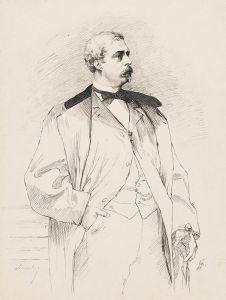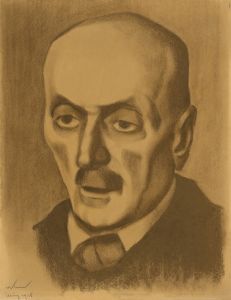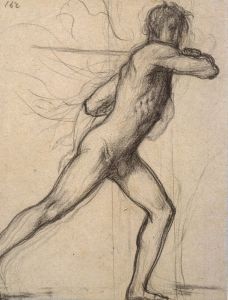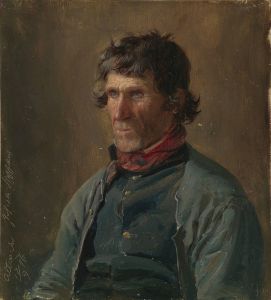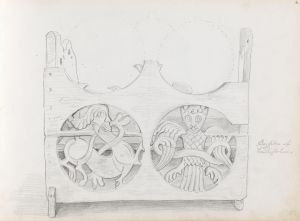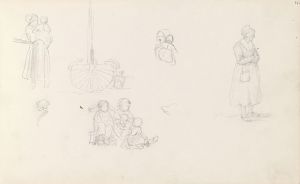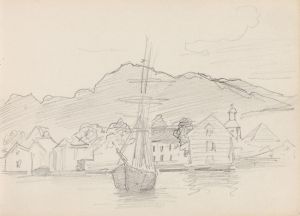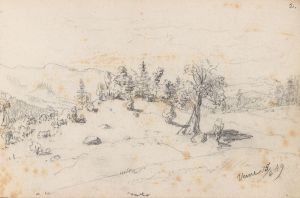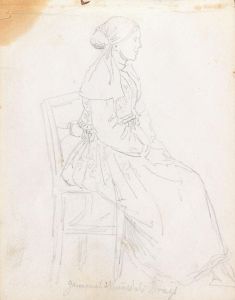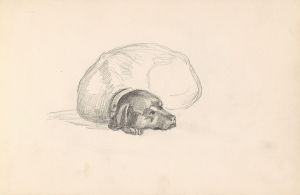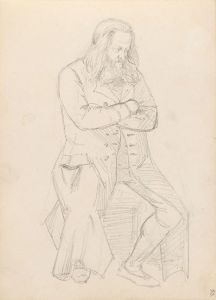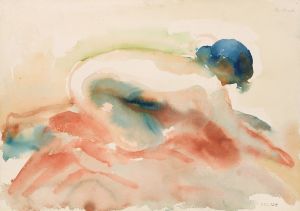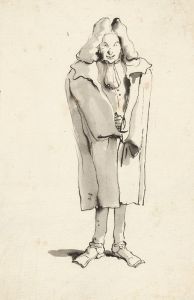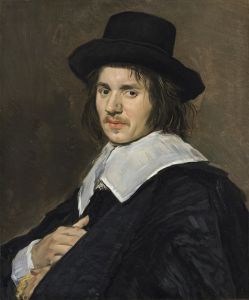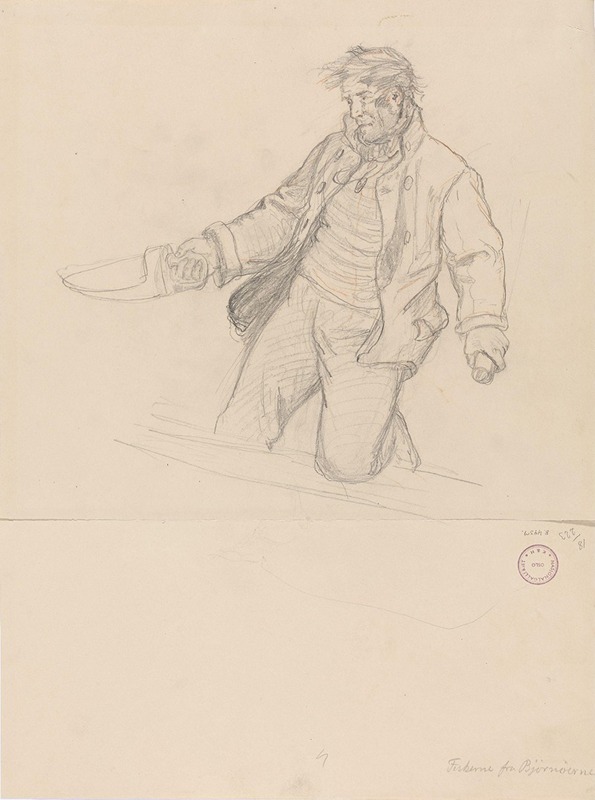
Mann på kne med øsekar i høyre hånd
A hand-painted replica of Adolph Tidemand’s masterpiece Mann på kne med øsekar i høyre hånd, meticulously crafted by professional artists to capture the true essence of the original. Each piece is created with museum-quality canvas and rare mineral pigments, carefully painted by experienced artists with delicate brushstrokes and rich, layered colors to perfectly recreate the texture of the original artwork. Unlike machine-printed reproductions, this hand-painted version brings the painting to life, infused with the artist’s emotions and skill in every stroke. Whether for personal collection or home decoration, it instantly elevates the artistic atmosphere of any space.
Adolph Tidemand (1814–1876) was a prominent Norwegian painter known for his detailed and realistic depictions of Norwegian folk life and traditions. One of his notable works is "Mann på kne med øsekar i høyre hånd" (Man on His Knees with a Ladle in His Right Hand). This painting exemplifies Tidemand's dedication to capturing the essence of rural Norwegian culture during the 19th century.
Adolph Tidemand was born in Mandal, Norway, and studied art in Copenhagen, Düsseldorf, and Italy. He became a central figure in the Düsseldorf school of painting, which was known for its meticulous attention to detail and historical accuracy. Tidemand's works often focused on the everyday lives of Norwegian peasants, their customs, and their environments, reflecting a deep respect for his homeland's cultural heritage.
"Mann på kne med øsekar i høyre hånd" is a fine example of Tidemand's genre painting. The artwork portrays a man kneeling, holding a ladle in his right hand. The setting and the man's attire suggest a scene from rural Norway, likely depicting a moment of daily life or a specific cultural practice. The painting's composition and the man's posture convey a sense of humility and dedication, characteristics often associated with the hardworking Norwegian peasantry of the time.
Tidemand's attention to detail is evident in the realistic rendering of the man's clothing and the surrounding environment. The textures of the fabric, the wooden ladle, and the earthy tones of the background all contribute to the painting's authenticity. This meticulous approach not only highlights Tidemand's technical skill but also his commitment to preserving the visual history of Norway.
Throughout his career, Tidemand collaborated with other artists, including Hans Gude, with whom he created some of the most iconic images of Norwegian national romanticism. Their joint works often combined Tidemand's figures with Gude's landscapes, creating comprehensive scenes that celebrated Norwegian identity. While "Mann på kne med øsekar i høyre hånd" is a solo work by Tidemand, it shares the same spirit of national pride and cultural documentation.
Adolph Tidemand's paintings, including "Mann på kne med øsekar i høyre hånd," played a significant role in shaping the visual narrative of Norway's national identity during the 19th century. His works were well-received both in Norway and abroad, earning him a lasting legacy as one of Norway's most important painters. Today, his paintings are held in high regard and can be found in various museums and collections, continuing to offer insights into the life and traditions of 19th-century Norway.
In summary, "Mann på kne med øsekar i høyre hånd" by Adolph Tidemand is a testament to the artist's skill in capturing the essence of Norwegian rural life. Through his detailed and realistic portrayal, Tidemand provides a window into the cultural heritage of Norway, preserving it for future generations to appreciate and study.





